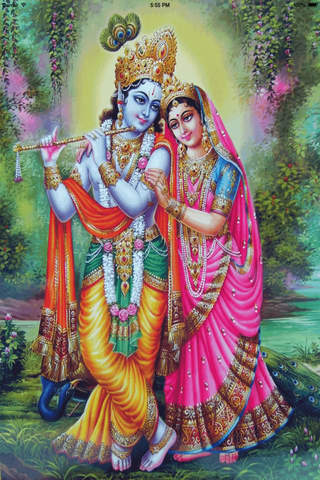
Krishna Aarti / Nand Kishor Aarti - Gopal Virtual Aarti
Krishna Pooja Gopal Temple is a temple, mandir, krishna nu mandir to worship the god without going to maandir. You can do live aarti, live darshan at your mobile finger tips. Application contain krishna wallpaper and devotee can worship her. All things together acts as a live wallpaper too.
See Application Fuctions Are Listed Below:
1). You can play shank.
2). You can play bell / Ghant / Ghanta.
3). You can play aarti with small ganti / bell.
4). Flowers to offer.
5). You can offer flowers mala also
About krishana Jee
"Vasudeva" redirects here. For the father of Lord Krishna, see Vasudeva. For Vaishnavism, see Krishna Vasudeva. Krishna The name Krishna appears as the 57th and 550th name of Lord Vishnu in Vishnu Sahasranama of the Mahabharata, and is also listed in the 24 Keshava Namas of Lord Vishnu which are recited and praised at the beginning of all Vedic pujas.
According to the Bhagavata Purana, which is a sattvic purana, asserts that Krishna is "Bhagavan Himself," and subordinates to itself all other forms: Vishnu, Narayana, Purusha, Ishvara, Hari, Vasudeva, Janardana, etc. Krishna is often described and portrayed as an infant or young boy playing a flute as in the Bhagavata Purana, or as a youthful prince giving direction and guidance as in the Bhagavad Gita. The stories of Krishna appear across a broad spectrum of Hindu philosophical and theological traditions. They portray him in various perspectives: a God-child, a prankster, a model lover, a divine hero, and the supreme being. The principal scriptures discussing Krishnas story are the Mahabharata, the Harivamsa, the Bhagavata Purana, and the Vishnu Purana. He is also called as Govinda & Gopala.
Puranic sources mention Krishnas disappearance marks the end of Dvapara Yuga and the start of Kali Yuga (present age), which is dated to February 17/18, 3102 BCE. Worship of the deity Krishna, either in the form of Vasudeva, Bala Krishna or Gopala can be traced to as early as 4th century BC. Worship of Krishna as svayam bhagavan, or the supreme being, known as Krishnaism, arose in the Middle Ages in the context of the bhakti movement. From the 10th century AD, Krishna became a favorite subject in performing arts and regional traditions of devotion developed for forms of Krishna such as Jagannatha in Odisha, Vithoba in Maharashtra and Shrinathji in Rajasthan. Since the 1960s the worship of Krishna has also spread in the West, largely due to the International Society for Krishna Consciousness.
Names and epithets
14th-century Fresco of Krishna on interior wall City Palace, Udaipur
Main article: List of titles and names of Krishna
The Sanskrit word in its origin language is primarily an adjective meaning "black" or "dark", sometimes it is also translated as "all attractive", according to members of the Hare Krishna movement.
As a name of Vishnu, Krishna listed as the 57th Name in the Vishnu Sahasranama. Based on His Name, Krishna is often depicted in murtis as black or blue-skinned. Krishna is also known by various other names, epithets and titles, which reflect His many associations and attributes. Among the most common Names are Mohan "enchanter", Govinda, "Finder of the cows", or Gopala, "Protector of the cows", which refer to Krishnas Childhood in Braj (in present day Uttar Pradesh). Some of the distinct names may be regionally important; for instance, Jagannatha, a popular Incarnation of Puri, Odisha in eastern India.


